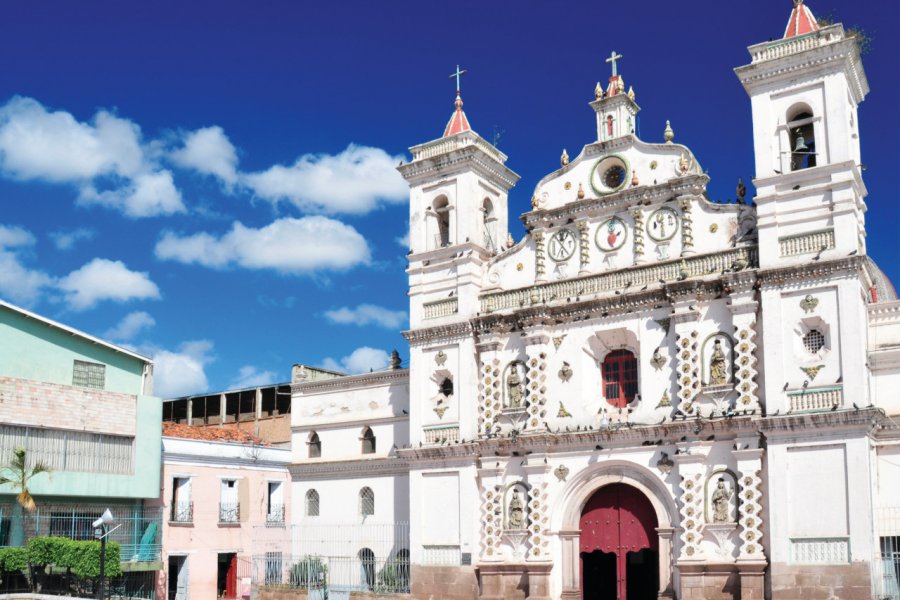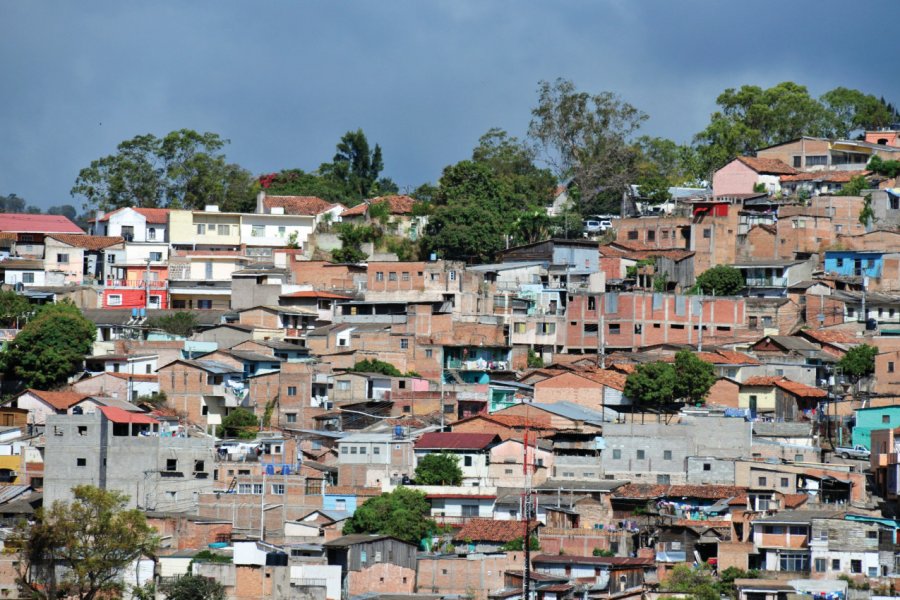Travel Guide Tegucigalpa
Find an accommodation
Advertising
It is officially located at 980 m above sea level (some quarters are 1 500 m) and 1 020 000 inhabitants (1,4 million in its agglomeration), Tegucigalpa is the political capital of Honduras, but its economic capital remains San Perdo Sula. The capital of Honduras is not the most beautiful city in the world - far from it - but a stay is not too unpleasant.Streets, day, are pretty safe, especially in the "living area", but not too much at night. There is no die of suffocation and many sights of tourist interest find themselves in the vicinity: mining villages of Santa Lucía, Valle de Angeles, Ojojona and Cedros, the National Park of La Tigra… The hotel and restaurant are of high quality and, as any capital, "Tegus" (the affectionate nickname of its inhabitants) has many pleasures and conveniences.According to tradition, the name «Tegucigalpa» would come from the indigenous lencas who populated the zone before Conquest, it would mean «land of silver». But Lencas had little interest in this metal, historians - anxious - did not seem to corroborate this version. Some are looking for "Earth where people meet" because the valley is ideal to rest between the north and the south, or "Painted stones" because there are many petroglyphs and pictographies around.In any case, the abundance of money in the surrounding mountains allécha many settlers based in Comayagua, the capital of the country from the end of the th century, and barracks were standing up as the mines excavated along the Río river. Indeed, a village called Real de Minas de San Miguel de Tegucigalpa gradually forma, but we don't know the precise date of its foundation.At the end of the th century, the importance of the money trade began to make the shadow in Comayagua. In this connection, it is reported that President Marco Aurelio Soto, shortly after Independence and the ephemeral République Republic, married a woman from Tegucigalpa, who was depreciated by Comayagua's high society. To avenge the honour of his beautiful - and thus to please him more - the country's highest magistrate would have decided to transfer the capital of Comayagua to Tegucigalpa. The reality is probably more prosaic: Soto was a shareholder of the silver mines around Tegus and he certainly wanted to be close to his interests. Indeed, Tegucigalpa became the capital of Honduras in 1880.The growth of the banana industry on the north coast at the beginning of the th century put a brake on the development of the city, remote from the flourishing production centres and trade. Since then, the capital has been quietly asleep and no large industry has been able to hope for better days. Industrial and commercial activities are permanently located in San Pedro Sula, the northern rival.This ambiguous situation of political and administrative capital without real economic power confers some obsolete charm in Tegucigalpa, both modern and rural. The atmosphere is rather relaxed and the people are welcoming.
What to visit Tegucigalpa?
Advertising
Weather at the moment
Advertising
Organize your trip with our partners Tegucigalpa
Transportation
Book your plane tickets
Car Rental
Boat rental
Accommodation & stays
Find a hotel
Holiday rental
Find your campsite
Tailor-made trip
Immersion travel
Services / On site
Activities & visits
Find a doctor















